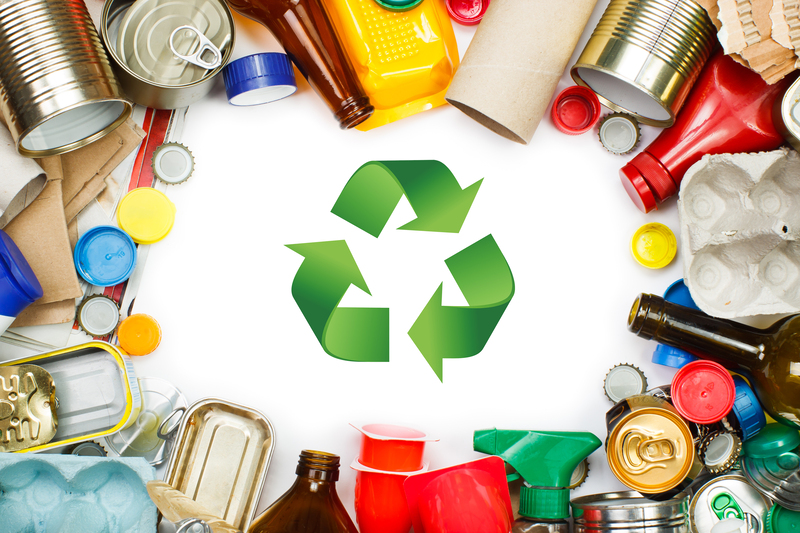How to Responsibly Dispose of Cookware Without Harming the Environment
In our pursuit of eco-conscious living, it's essential to consider every item's sustainable disposal, even everyday kitchen essentials. Cookware--from old frying pans and pots to battered baking trays--can create unintended environmental impacts when discarded improperly. This comprehensive guide explores how to responsibly dispose of cookware without harming the environment and offers actionable strategies for reducing your household eco-footprint.
Why Responsible Cookware Disposal Matters
Cookware is constructed from various materials, including metals, ceramics, glass, and plastics. When these items end up in landfills, they contribute to pollution, resource depletion, and sometimes leach harmful chemicals into the soil and groundwater. Disposing of cookware responsibly ensures these items are either recycled, repurposed, or properly managed, reducing your household impact on the planet.
- Landfill limitations: Cookware can take centuries to decompose, especially non-biodegradable components like Teflon or plastics.
- Hazardous chemicals: Coatings and nonstick materials may break down, leaching toxic substances.
- Resource recovery: Metals and glass are finite resources. Recycling helps keep these resources in the manufacturing loop.

Assessing Your Old Cookware: What to Dispose and What to Reuse
Before you dispose of any kitchenware, first evaluate its condition. Is it still usable for its original or an alternative function? Here are some factors to consider:
- Damage: Deep cracks, warped surfaces, or severely worn coatings are signs the cookware is no longer safe.
- Material: Is it metal, ceramic, glass, or nonstick? The disposal methods may vary.
- Potential for repurposing: Could it serve a new role, like storage or gardening?
Signs Your Cookware Needs Disposal
- Nonstick coating is flaking or peeling.
- Significant rust or corrosion on metal cookware.
- Cracks in ceramic, glass, or cast iron that may harbor bacteria.
- Unrepairable dents or warps affecting heating or safety.
Understanding Different Types of Cookware and Their Environmental Impact
Each kind of cookware--be it metal, ceramic, glass, or nonstick--presents distinct recycling and waste management challenges. Here's how to handle various cookware types responsibly:
Metal Cookware (Stainless Steel, Aluminum, Cast Iron)
Metal pots and pans are the easiest type of cookware to recycle, as metal is highly valued in recycling processes.
- Stainless Steel: Most recycling centers accept old stainless steel cookware. Verify whether plastic handles need removal first.
- Aluminum: Clean, uncoated aluminum can go with metal cans, but nonstick coatings may complicate recycling.
- Cast Iron: Heavily rusted or cracked skillets can be recycled as scrap metal, though many people restore old cast iron instead.
Ceramic and Glass Cookware
Ceramic dishes and glass bakeware require special handling, as they cannot usually be combined with glass bottle/jar recycling streams due to different melting points.
- Ceramic: Broken ceramics can sometimes be taken to specific recycling or construction fill sites.
- Pyrex and Glass Bakeware: Most curbside programs don't accept these; check with your local facility or toss as a last resort.
Nonstick and Teflon-Coated Cookware
Disposing of nonstick cookware presents unique problems. The PTFE (Teflon) coating can't be recycled and may release toxins if incinerated.
- Separate metal base from coating if possible (check with local recycling).
- Ask brands if they offer direct take-back programs.
Plastic Kitchenware
Certain plastic utensils or heat-proof containers need to be handled based on their resin code. Many are not suitable for recycling due to food residue or specific chemicals.
Step-by-Step: How to Responsibly Dispose of Cookware
Ready to get started? Follow these actionable steps to make sure you're disposing of your old cookware responsibly and sustainably:
1. Reuse, Repurpose, or Upcycle First
- Gift or Donate: If in good condition, offer old cookware to friends, family, local shelters, or charity shops. Some community kitchens or nonprofits welcome gently used cookware.
- Garage Sales: Sell cookware that's still functional through online platforms or local sales.
- Repurpose: Convert pots into planters, utensil holders, or storage bins. Cast iron can become unique decor or doorstops! Get creative--you'll both reduce waste and add charm to your home.
2. Seek Out Manufacturer Take-Back or Recycling Programs
Some popular cookware brands, especially those focused on sustainability, have in-house recycling initiatives. Here's how to leverage them:
- Check the brand's website for mail-back recycling programs.
- Reach out to customer service and ask about trade-in or refurbishing initiatives.
- Brands like TerraCycle partner with manufacturers for specialized kitchenware recycling.
3. Use Local Scrap Metal Recycling Facilities
Most local recycling centers accept metal cookware, but requirements vary. Here's how to ensure your pans and pots are welcomed:
- Clean thoroughly: Remove all food debris.
- Remove non-metal parts: Unscrew or pry off plastic or wooden handles, if feasible.
- Separate by type: If you have aluminum, stainless steel, and cast iron, sort them ahead of time.
- Check your area's scrap metal policies--some drop-off points may offer cash for valuable cookware materials!
4. Confirm with Your Local Municipal Recycling Guidelines
Not all curbside recycling programs accept old cookware. Contact your city waste management for detailed information on:
- Which materials are accepted
- If cookware can go in regular recycling or needs a special drop-off
- Hazardous waste instructions for broken or coated cookware
5. Last Resort: Proper Landfill Disposal
If cookware can't be recycled or reused, minimize its landfill impact:
- Break it up: Reduce size for safer landfill handling.
- Bundle sharp or broken pieces in newspaper and label as "dangerous household goods."
- Never burn nonstick or Teflon-coated items, as this releases toxic gases.
Special Materials and Eco-Conscious Cookware Alternatives
If you find it difficult to dispose of certain cookware, consider sustainable alternatives for your next purchase and ways to prevent waste in the future.
Look for Eco-Friendly Cookware for Future Use
- Choose uncoated stainless steel or cast iron, which can be recycled or re-seasoned/fixed for generations.
- Buy from brands that already offer recycling or circular economy solutions.
- Seek products made from recycled materials.
Handle Non-Recyclable Cookware with Care
Some composite or multi-layered cookware (e.g., copper-bottomed pans with plastic handles and nonstick surfaces) can be very difficult to recycle. Always:
- Disassemble as much as possible, separating different materials.
- Dispose of hazardous coatings (like Teflon) at local hazardous waste sites if required.
- Contact local recycling experts for advice on tricky items.
Common Mistakes When Disposing of Cookware
Even eco-minded individuals can make mistakes! Avoid these common pitfalls:
- Placing cookware in the wrong recycling bin causes contamination.
- Binning Teflon pans with regular metals instead of treating them as hazardous.
- Throwing glass bakeware with bottle or jar recycling (different glass types can ruin batches).
- Neglecting to clean cookware before disposal--food residue can render recyclables unusable.

Global Initiatives and Cookware Circularity
Some regions lead the way in circular kitchenware solutions. European countries often have schemes collecting old cookware for specialized recycling. In North America, awareness is growing thanks to non-profits and industry partnerships. Stay tuned for updates in your locale, and support initiatives that increase cookware recycling rates!
Conclusion: Taking Steps Toward Sustainable Kitchen Management
Disposing of cookware without harming the environment requires more than tossing your old pots into the bin. It's about making informed choices, seeking recycling opportunities, and finding new life for the tools that once supported your culinary adventures. By choosing eco-friendly disposal methods for cookware, you contribute to healthier ecosystems and a more responsible way of living.
Educate household members about best practices, spread the word to friends, and carefully consider your next kitchen purchase. Every small step adds up--let's cook up a more sustainable future, starting with the way we dispose of our cookware.
Key Takeaways:
- Always try to reuse, repurpose, or donate functional cookware before disposal.
- Research local recycling and take-back programs for responsible cookware disposal.
- Handle hazardous and coated items with care--never burn them, and use proper waste facilities.
- Choose sustainable cookware materials to minimize future waste.
Ready to clear your cabinets and make a positive environmental impact? Follow these eco-friendly cookware disposal tips and share your knowledge to bring about change one kitchen at a time!
